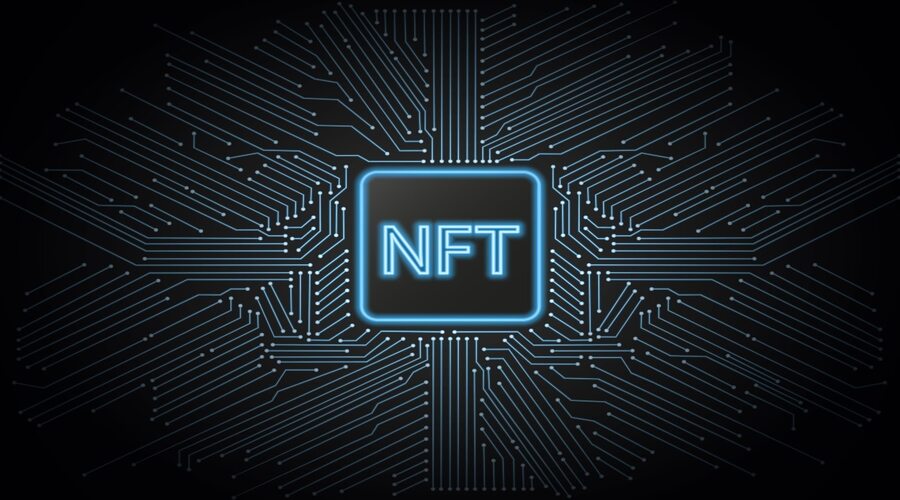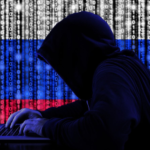
NFT Security Considerations for Cross-Chain Interoperability
- summy Morphe
- May 17, 2023
- NFT
- Interoperability, NFT, Security
- 0 Comments
Introduction
With the rise of non-fungible tokens (NFTs) and the increasing popularity of blockchain technology, cross-chain interoperability has become a crucial topic in the world of decentralized finance. As NFTs are created, bought, and sold across different blockchain networks, ensuring their security becomes paramount. This article explores the various security considerations that should be taken into account when dealing with NFTs in a cross-chain interoperable environment.
What are NFTs?
NFTs, or non-fungible tokens, are unique digital assets that are recorded on a blockchain. Unlike cryptocurrencies such as Bitcoin or Ethereum, which are fungible and can be exchanged on a one-to-one basis, NFTs represent ownership of a specific item or piece of content. These can include digital art, collectibles, virtual real estate, and more.
Cross-Chain Interoperability
Cross-chain interoperability refers to the ability of different blockchain networks to communicate and interact with each other seamlessly. In the context of NFTs, it enables the transfer and use of tokens across different blockchains, expanding their reach and potential applications.
Security Challenges in NFTs

As NFTs gain popularity, they have become an attractive target for hackers and malicious actors. Several security challenges need to be addressed to ensure the safe creation, ownership, and transfer of NFTs:
- Smart Contract Vulnerabilities: NFTs are often built on smart contracts, which can have coding vulnerabilities leading to potential exploits.
- Ownership and Authenticity: Verifying the ownership and authenticity of NFTs is crucial, as fake or stolen NFTs can undermine trust in the market.
- Private Key Management: Proper management of private keys is essential to prevent unauthorized access and ensure the security of NFTs.
- Interoperability Risks: Transferring NFTs across different blockchains introduces additional security risks due to differences in protocols and consensus mechanisms.
Risks of Cross-Chain Interoperability
When considering cross-chain interoperability for NFTs, it’s important to be aware of the potential risks involved:
- Smart Contract Incompatibility: Different blockchains may have varying smart contract capabilities and standards, making it challenging to ensure seamless interoperability.
- Double Spending: The transfer of NFTs between blockchains opens the possibility of double spending if not properly managed.
- Intermediary Risks: Intermediary solutions or bridges used for cross-chain transfers can become targets for attacks or introduce vulnerabilities.
- Regulatory Compliance: Cross-chain interoperability may raise legal and regulatory concerns, as different jurisdictions have varying frameworks for cryptocurrencies and NFTs.
Best Practices for NFT Security
To mitigate the security risks associated with cross-chain NFT interoperability, consider implementing the following best practices:
- Multi-Signature Wallets: Use multi-signature wallets to require multiple authorized parties to approve NFT transfers, adding an extra layer of security.
- Auditing Smart Contracts: Conduct thorough audits of smart contracts to identify and address potential vulnerabilities before deploying NFTs.
- Secure Key Management: Employ best practices for key management, including using hardware wallets, offline storage, and encryption to protect private keys.
- Ensuring Proper Authentication: Implement robust authentication mechanisms to verify the ownership and authenticity of NFTs during cross-chain transfers.
- Network Consensus and Security: Choose blockchain networks with robust consensus algorithms and security measures to minimize the risk of attacks.
- Secure Cross-Chain Communication: Utilize secure and trusted interoperability solutions to transfer NFTs across different blockchains, reducing the likelihood of unauthorized access.
- Risk Assessment and Due Diligence: Conduct thorough risk assessments and due diligence when selecting cross-chain interoperability solutions or bridges.
- Compliance with Regulatory Standards: Stay informed about the legal and regulatory requirements in relevant jurisdictions to ensure compliance when dealing with cross-chain NFT transfers.
Auditing Smart Contracts
When deploying NFTs on a blockchain, it is crucial to conduct thorough audits of the smart contracts involved. Smart contract audits help identify potential vulnerabilities and coding errors that could be exploited by malicious actors. By engaging professional auditors or utilizing automated auditing tools, you can ensure that the smart contracts powering your NFTs are secure and free from common vulnerabilities.
Secure Key Management
Proper key management is essential for NFT security. Private keys grant access to the ownership and transfer of NFTs, so it’s crucial to employ secure key management practices. Consider using hardware wallets, which store private keys offline and provide an additional layer of protection against unauthorized access. Encryption techniques can also be employed to safeguard private keys from potential threats.
Ensuring Proper Authentication
Verifying the ownership and authenticity of NFTs is paramount in a cross-chain interoperable environment. Implement robust authentication mechanisms to ensure that only authorized individuals can initiate NFT transfers. This can include multi-factor authentication, biometric authentication, or other secure identification methods. By enforcing strict authentication protocols, you can minimize the risk of unauthorized NFT transfers.
Network Consensus and Security
When considering cross-chain interoperability, it is essential to select blockchain networks with robust consensus algorithms and strong security measures. Networks with decentralized consensus mechanisms, such as Proof-of-Stake (PoS) or Proof-of-Authority (PoA), offer higher levels of security and resistance to attacks. Additionally, staying updated with network upgrades and security patches is crucial to maintain a secure environment for NFT transactions.
Secure Cross-Chain Communication
To ensure the secure transfer of NFTs across different blockchains, it is important to utilize trusted and secure cross-chain communication protocols. Interoperability solutions that establish secure bridges between blockchains can facilitate seamless and secure transfers. These solutions should prioritize data integrity, encryption, and authentication to prevent unauthorized access and tampering during the transfer process.
Risk Assessment and Due Diligence
Before engaging in cross-chain NFT transactions, it is essential to conduct thorough risk assessments and due diligence. Evaluate the security measures and reputation of the blockchain networks and interoperability solutions involved. Assess the track record of the platforms and marketplaces you intend to use for NFT transactions. By performing comprehensive risk assessments, you can make informed decisions and reduce the likelihood of security breaches or fraudulent activities.
Secure Metadata Storage
Metadata associated with NFTs contains valuable information such as the creator, description, and provenance of the digital asset. It is essential to ensure the secure storage of metadata to maintain the integrity and authenticity of NFTs. Consider utilizing decentralized storage solutions or blockchain-based metadata protocols that provide tamper-proof and verifiable storage.
Immutable Transaction History
One of the key advantages of blockchain technology is its immutable nature, which means that once a transaction is recorded on the blockchain, it cannot be altered. This feature is crucial for NFT security, as it provides a transparent and auditable transaction history. Users can verify the ownership and legitimacy of NFTs by tracing their transaction history on the blockchain.
Gas Optimization
Gas optimization is a crucial consideration when dealing with NFTs in a cross-chain interoperable environment. Gas refers to the fee required to execute transactions on a blockchain. Optimizing gas usage helps reduce transaction costs and ensures efficient utilization of blockchain resources. Consider implementing gas optimization techniques, such as batch transfers or using layer 2 scaling solutions, to enhance the cost-effectiveness of cross-chain NFT transactions.
Community Governance and Consensus
In decentralized ecosystems, community governance and consensus mechanisms play a vital role in maintaining the security and integrity of NFTs. Engaging the community through decentralized governance models allows for collective decision-making, including protocol upgrades, security audits, and dispute resolutions. By fostering a strong community and inclusive consensus mechanisms, the overall security of NFTs can be strengthened.
Education and User Awareness
Promoting education and user awareness is essential for ensuring NFT security in a cross-chain interoperable environment. Many users may be new to blockchain technology and NFTs, making them vulnerable to scams or security risks. Providing educational resources, tutorials, and security guidelines can empower users to make informed decisions and protect themselves from potential threats.
Continuous Monitoring and Incident Response
Maintaining a proactive approach to security is crucial for cross-chain NFT interoperability. Implement robust monitoring systems to detect and respond to security incidents promptly. This includes monitoring smart contracts, network activity, and user behavior to identify any anomalies or potential vulnerabilities. Establish an incident response plan to address security breaches or vulnerabilities promptly and effectively.
Collaboration and Information Sharing
Collaboration and information sharing among industry stakeholders are vital for enhancing NFT security in a cross-chain environment. Engage in partnerships, industry forums, and knowledge-sharing initiatives to stay updated on the latest security practices, emerging threats, and solutions. By working together, the blockchain community can collectively improve the security measures surrounding NFTs and cross-chain interoperability.
Compliance with Regulatory Standards
As the NFT market continues to evolve, regulatory frameworks are also developing. Different jurisdictions may have varying legal requirements for NFTs and cryptocurrencies. It is crucial to stay informed about the relevant regulations and ensure compliance when dealing with cross-chain NFT transfers. This includes understanding tax obligations, anti-money laundering (AML) regulations, and intellectual property rights considerations.
Conclusion
Cross-chain interoperability brings exciting possibilities for NFTs but also introduces security challenges. By adopting best practices and considering the risks involved, it is possible to create a more secure environment for NFT transactions. Ensuring the proper security measures are in place will help protect the integrity and value of NFTs in a cross-chain interoperable ecosystem. By focusing on secure metadata storage, immutable transaction history, gas optimization, community governance, education, continuous monitoring, and collaboration, the security of NFTs in a cross-chain environment can be significantly enhanced. Emphasizing these aspects will contribute to a safer and more trustworthy ecosystem for the creation, ownership, and transfer of NFTs.


